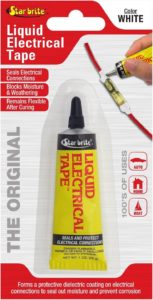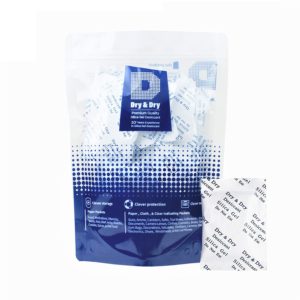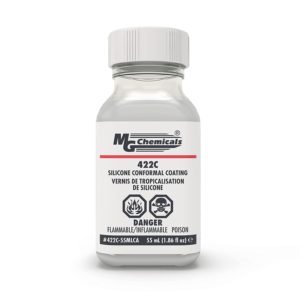Radio orienteering is played in all kinds of weather, which is a problem when it rains. Oh, you’ll muddle through and dry out with no harm done. But what about your radio equipment? Transmitters and receivers do not tolerate moisture. Water can render them temporarily inoperable or even damage them permanently. So it is imperative to keep water where it belongs: outside the equipment case.
The case surrounding the sensitive electronic innards of your equipment might look waterproof, but unless you’ve taken measures to make it so, it is a sure bet that it leaks like a sieve. Anywhere that water can seep, it will do so. That includes every hole, seam, and joint. It also includes all jacks, buttons, switches, and shafts. If it passes through the wall of the enclosure, it can leak.
So what to do? The answer: everything you can to keep water from penetrating the equipment box. There are several layers of defense. Let’s start with the outermost and work our way in.
Rainhat and Galoshes
The simplest, and least effective approach, is to keep the water from reaching the equipment. That can be accomplished by shielding the equipment with a suitable raincoat. A plastic bag can be quite effective for keeping rain from reaching a stationary transmitter. A bag is less effective for shielding a portable receiver swinging in a runner’s hand. First, the antenna elements will generally be too large to be inside, so they must penetrate the bag, resulting in holes for water to enter. Then there’s the headphone cable – creating yet another hole. Operating the receiver will require pinching knobs and switches through a layer of plastic or adding a large hole for the hand to fit through. Duct tape or electrical tape can help seal around all the punctures in the bag, but such measures might not last through a soggy race. The bottom line: bags are an unreliable method for protecting radio-orienteering receivers and should be used only as a last resort or as an extra layer of protection.
Sealing the Box
The next line of defense is the equipment case itself. Seams and gaps at panel and box interfaces can be covered by duct or electrical tape. They can also be filled using “Liquid Electrical Tape,” silicone glue, sealant, Plasti-Dip, or suitable paint.

When the gap involves a removable panel providing service access (like a battery compartment cover), the filler material needs to be temporary. Silicone paste (aka waterproof dielectric grease) is perhaps the best temporary filler. It is thick and long-lasting, harmless to rubber or plastic, and remains a thick paste even at high temperatures (unlike petroleum jelly). Silicone grease can be applied to jacks, switches, and around potentiometer shafts, where it will help seal out moisture even when those items are moved, rotated, or a plug is inserted. The downside to silicone grease is that it is messy and slippery when eventually, it spreads around the case and to other objects that come into contact with it. But it cleans up readily with soap and water or some rubbing alcohol. Some formulations are toxic and can irritate the eyes and skin. Follow label directions.
![]()
Putting some silicone grease into the headphone jack will do a good job of sealing it against water. The headphones simply plug in as usual, pushing the silicone grease aside, but leaving enough of it to seal around the plug. It is just the kind of application that silicone grease is designed for. Consider keeping some silicone grease available in your equipment bag for use on wet days.
Sealing Inside the Box
Inside the receiver’s enclosure, you might be able to access the backsides of the panel-mounted components. Sometimes, the back of a jack, potentiometer, or switch can be safely and readily coated with a sealant. Care should be taken to ensure the sealant does not seep into the component and damage it. Thoroughly sealing the back of a jack, switch, or potentiometer can effectively block moisture that would otherwise leak through. While sealing inside the box will keep water from getting inside the enclosure, it does not prevent it from getting inside the sealed components. Jacks, potentiometers, and switches with inward-facing surfaces sealed, still need to be protected from the outside or be thoroughly dried and treated with contact cleaner after any exposure to water.
Once your equipment’s enclosure is thoroughly sealed, you might consider placing a small pack of desiccant inside it. The desiccant will remove moisture from the air inside the device. The resulting extremely-dry air is ideal for extending the life of electronic devices and will prevent condensation from forming on surfaces inside the enclosure when the device gets cold. The desiccant packet will need to be replaced (or recharged by heating) periodically, typically every 6 to 12 months.

Sealing the Board
The last line of defense against water is at the board level. Printed circuit boards (PCBs) can be coated to protect them from moisture. A thorough conformal coating can render a PCB sufficiently waterproof to continue functioning normally even if immersed in water. But you might want to stop short of fully encasing a PCB in conformal coating. Many PCBs include trimmer resistors or capacitors, which would be rendered inoperable if sealed inside a conformal coating. Adjustable components such as those would be best left uncoated.


Thanks for the great ideas. I have used Blue removable tape around the perimeter openings of my receiver and also covered the switches and buttons. This has been pretty good, but didn’t protect the gain and frequency dials. It has been a few years and the problems mentioned in your “contact cleaner” article crept into the receiver. The cleaner worked wonders. I’ll add the grease to my dials.